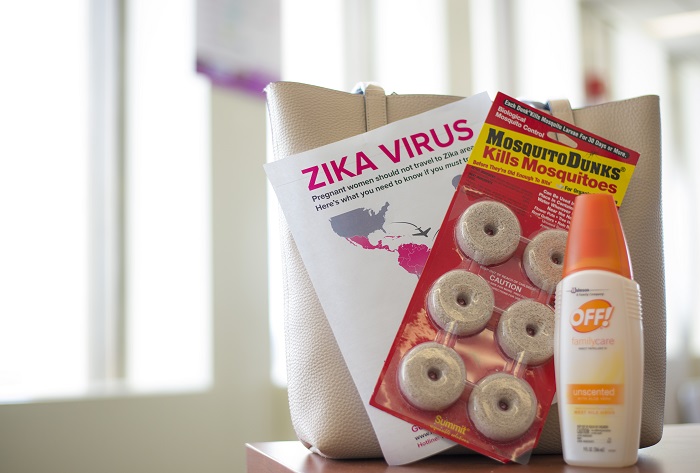Albany, NY - May 25, 2016 - Governor Andrew M. Cuomo today announced the launch of an aggressive public awareness campaign to educate New Yorkers on the dangers of the Zika Virus. The campaign’s launch marks the latest step forward in implementing the Governor’s comprehensive six-step action plan to combat Zika.
Already, more than 7,000 larvicide tablets have been distributed to eliminate Aedes mosquitoes potentially carrying the virus. Additionally, New York City and the 57 other counties in New York have all received approval from the state Department of Health on local Zika action plans.
"New York State has put forward the nation's most robust action plan to combat Zika and eliminate this deadly disease at its source," Governor Cuomo said. "This public awareness campaign will ensure New Yorkers understand the threat Zika poses and how we can stop its transmission. By providing New Yorkers with the information they need, we can protect the public health and put an end to Zika once and for all."
As part of the campaign, a public service announcement has begun running in English and Spanish on more than 40 television stations statewide and will continue for the duration of the mosquito season, which ends in September. Radio announcements, also in English and Spanish, were sent to more than 100 radio stations across the state and will run during the same timeframe.
Additionally, billboards and informational posters in subways and on buses will be utilized, digital advertisements will be displayed on travel-related websites and New York State has established a Zika Information Helpline (1-888-364-4723), as well as a dedicated website to provide information directly to residents.
New York State Health Commissioner Dr. Howard Zucker said, "The Department of Health is focused on reducing the risk of Zika virus transmission in New York State. Governor Cuomo's six-point action plan provides local governments with the support and guidance necessary to address Zika and minimize its impact; and the public awareness campaign provides the information residents need to avoid the risk of Zika transmission."
Zika is a mosquito-borne virus transmitted primarily by the Aedes aegypti mosquito in South and Central America. The virus can also be sexually transmitted. Although Aedes aegypti mosquitoes are not present in New York, a related species named Aedes albopictus is active in the downstate region. Scientists have not yet determined if Aedes albopictus – the type in New York – transmits Zika. There are 70 different species of mosquito in New York State and Aedes albopictus make up just three to five percent of the total population. Mosquito season in New York runs from April through September.
The greatest danger facing those who contract Zika is a birth defect known as microcephaly. This disease occurs in babies of mothers who are infected with the Zika Virus while pregnant. Zika may also cause a rare disorder called Guillain Barré Syndrome, which can cause temporary paralysis. The World Health Organization declared Zika a public health emergency of international concern in February.
Governor Cuomo’ Six-Point Zika Action Plan
1. Eliminate Zika at its Source.
To eliminate mosquito breeding sites, the state will distribute 100,000 larvicide tablets throughout the target region. More than 7,000 tablets have already been distributed to municipalities in the downstate area.
Additionally, local counties, residents and business owners will be challenged to host clean-up days that effectively eliminate standing water. Residents can request tablets by calling 1-888-364-4723. One larvicide tablet lasts one month.
Aedes mosquitoes breed in containers with clean water. New Yorkers are encouraged to do their part by distributing larvicide tablets in permanent places of standing water, such as flower pots, and removing sources of standing water of all sizes, such as old tires, children's toys, plastic containers and even clogged gutters – especially after it rains.
2. Aggressively Monitor the Aedes Mosquito with Special Trapping and Testing.
The state will aggressively monitor the mosquito population by deploying special mosquito traps to collect and test mosquitoes across the region to identify and respond to potential Zika transmission. The state will deploy traps in 1,000 locations per month.
Wadsworth Laboratory – already a national leader in Zika testing – will expand its testing capacity to accommodate the additional trapping. The state Department of Health will test 60,000 Aedes mosquitoes per month at Wadsworth in Albany.

Pictured is the Zika protection kit. Photo: Governor Cuomo's Press Office.
3. Provide Free Zika Protection Kits to Pregnant Women.
The state will distribute free Zika protection kits to pregnant women in the target region. The Zika protection kits contain educational materials, insect repellent, condoms and larvicide tablets to treat standing water. A total 20,000 kits will initially be distributed to healthcare providers throughout the region. A photo of a Zika protection kit is available here.
The Zika protection kits complement the state's offering of free Zika testing to all pregnant women who recently traveled to a country with active Zika transmission or have had unprotected sex with a partner who recently traveled to or resides in a country with active Zika transmission. Men who recently traveled or reside in an area with active Zika transmission and have a pregnant partner should use condoms consistently and correctly or abstain from sex throughout the pregnancy.
The state Department of Health continues to offer webinars for health care providers on the Zika Virus and the care of pregnant women with possible exposure to Zika. Based on current information, infection with Zika at any point in the pregnancy could place the developing fetus at risk. The effect of Zika exposure at different stages of pregnancy on birth defects is not known.
4. Deploy Rapid Response Teams Wherever Local Transmission is Confirmed.
The state will deploy rapid response teams wherever a case of Zika transmission by an Aedes mosquito is confirmed. The rapid response team will be composed of officials from the State Department of Health and the Department of Homeland Security and Emergency Services Office of Emergency Management to inspect surrounding areas, perform additional treatment and develop a local action plan.
5. Issue Emergency Regulations Requiring Local Zika Control Plans Upon Zika Confirmation.
The Commissioner of DOH issued emergency regulations requiring all local health departments to submit Zika action plans with updated protocols for trapping, testing and control. The state Department of Health has approved plans in all 58 counties in New York State.
6. Launch Statewide Public Awareness Campaign.
The state has launched an aggressive public awareness campaign targeting New Yorkers across the state, as well as international travelers from Zika-affected areas.
The public awareness campaign includes:
- PSA running on 40 television stations and 100 radio stations across the state;
- Multi-lingual posters, brochures and fact sheets to educate travelers about Zika;
- The Zika Information Helpline (1-888-364-4723); and
- A website dedicated to the Zika Virus.
To ensure travelers take the necessary precautions to protect themselves against Zika, the state will work with airports in the target region and across New York State to disseminate print materials and broadcast public service announcements to passengers.










